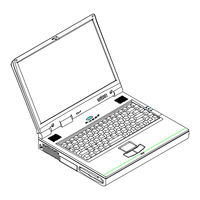Eurocom DeskNote 3100C Manuals
Manuals and User Guides for Eurocom DeskNote 3100C. We have 2 Eurocom DeskNote 3100C manuals available for free PDF download: Manual, User Manual
Eurocom DeskNote 3100C Manual (117 pages)
This manual is for the EUROCOM 3100C DeskNoteä
Table of Contents
Advertisement
Advertisement

